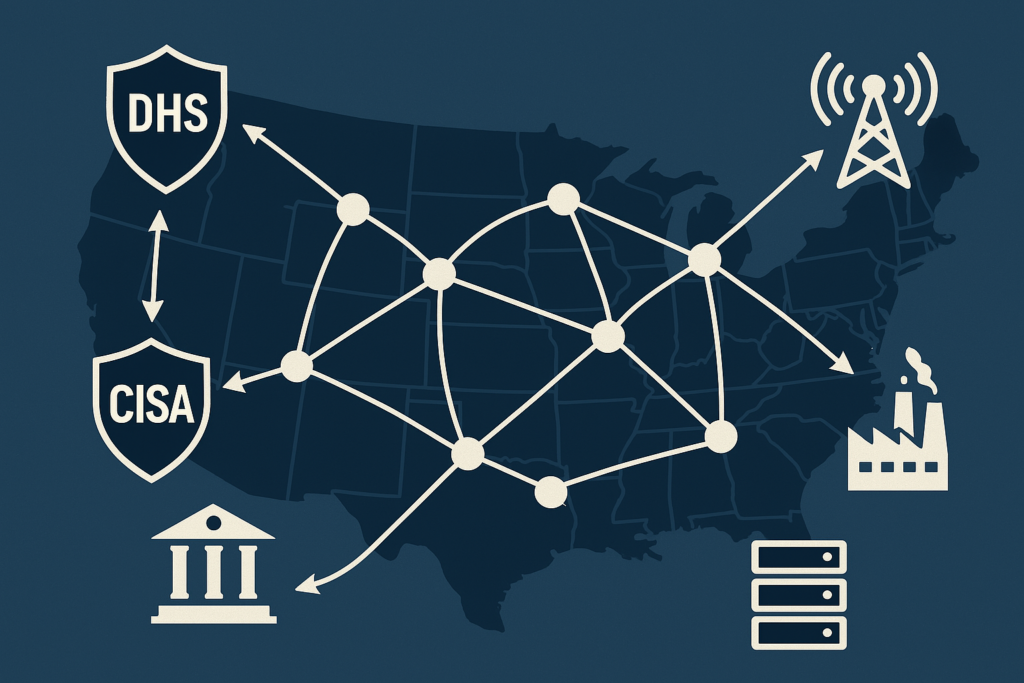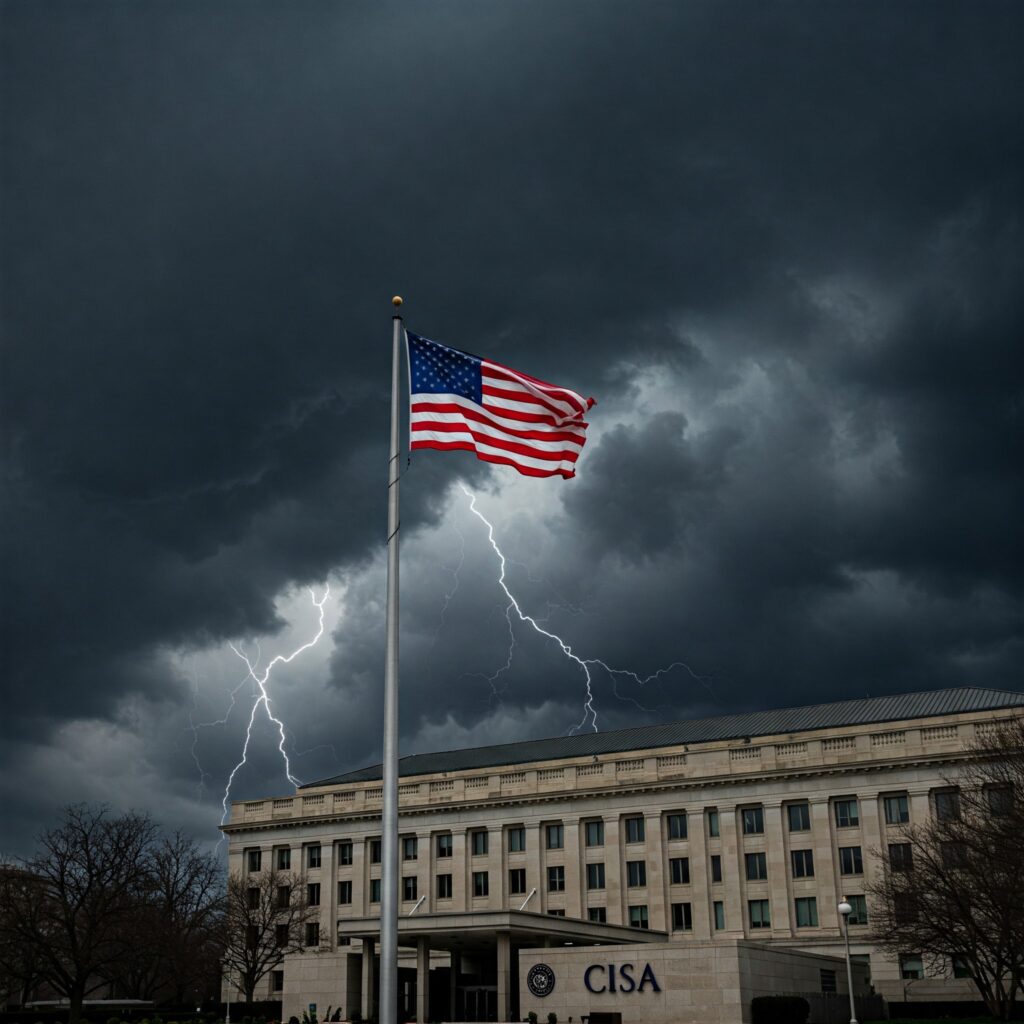
The U.S. just dismantled a foundational element of its cybersecurity coordination strategy—and hardly anyone noticed.
In February 2025, Executive Order 14217 was signed into law, ordering the elimination of multiple federal advisory bodies as part of a broad restructuring of government operations. Among them was the Critical Infrastructure Partnership Advisory Council, or CIPAC—a council that, for nearly two decades, quietly enabled secure collaboration between public agencies and the private companies that keep America’s infrastructure running.
What follows is a breakdown of why CIPAC mattered, what its sudden removal means for national security, and what must come next to protect the systems we all rely on.
🧩 I. Introduction: The Quiet Collapse of a Critical Cyber Bridge
A National Security Tool Disbanded Without Warning
On February 19, 2025, President Donald Trump signed Executive Order 14217, titled “Commencing the Reduction of the Federal Bureaucracy.” This sweeping directive led to the abrupt dissolution of multiple advisory bodies, including the Critical Infrastructure Partnership Advisory Council (CIPAC). The Department of Homeland Security (DHS) confirmed the council’s termination in a Federal Register notice published on March 13, 2025, formally effective as of March 7, 2025. (Federal Register)
Why CIPAC Mattered More Than You Realized
Though obscure to the public, the advisory board was a foundational pillar of public-private cybersecurity collaboration in the United States. Created under DHS in 2006, it offered legal protections for critical infrastructure entities to securely and candidly share threat intelligence with government agencies. Without it, a vital channel for infrastructure protection has disappeared, sparking urgent concerns from cybersecurity professionals, lawmakers, and industry leaders. (Axios)
The Keyword in Focus: CIPAC’s Disbandment
The council was uniquely exempt from the Federal Advisory Committee Act (FACA), allowing confidential information exchanges without fear of public exposure or liability. Its disbandment has removed these safeguards. This post explores what CIPAC was, why it mattered, why it was shut down, and how the U.S. must now adapt to safeguard national cybersecurity.
🔥 II. What Was CIPAC — and Why Did It Matter?
Origins and Legal Foundation
The advisory board was created in 2006 by DHS to support the implementation of the National Infrastructure Protection Plan (NIPP). It allowed industry and government stakeholders to collaborate outside of traditional bureaucratic constraints by operating under a FACA exemption. (Lexology)
How CIPAC Was Structured
The council functioned through two core components:
- Sector Coordinating Councils (SCCs): Private-sector representatives from critical infrastructure sectors like energy, healthcare, and telecommunications.
- Government Coordinating Councils (GCCs): Representatives from federal, state, local, tribal, and territorial governments. This structure allowed for rapid information flow and trusted coordination across public and private lines.
What It Enabled in Practice

The framework supported secure intelligence sharing, sector-specific briefings, joint tabletop exercises, incident response coordination, and policy development. Its legal protections created an environment where vulnerabilities and mitigation strategies could be openly discussed.
🔐For more on how AI is changing modern cyber defense, see our post: AI-Powered Brute Force Attacks: The Next Evolution in Hacking
Success Stories You Probably Never Heard About
CIPAC was instrumental in the coordinated response to the SolarWinds breach and the Colonial Pipeline ransomware attack, both of which required cross-sector mitigation efforts. These successes underscore the importance of having a legal framework to unite industry and government during national cybersecurity events. (Center for Cybersecurity Policy)
📉 III. Why Was CIPAC Disbanded? Conflicting Rationales
DHS and CISA’s Official Justification
According to DHS, the elimination of the council was part of an effort to “streamline operations, reduce redundancy, and modernize collaboration.” However, specifics around replacement mechanisms remain vague.
The Political Subtext: Budget Cuts, Centralization, or Distrust?
Critics argue the decision may reflect growing executive centralization, a distrust of industry involvement, or a political move to reduce oversight. Some stakeholders suspect the move was aimed at limiting transparency in cybersecurity policymaking.
Executive Order 14217 Explained
The EO called for a government-wide reduction of advisory committees that were deemed non-essential. Although CIPAC was highly active and widely used, it was nonetheless disbanded without a public hearing or advance warning. (Federal Register)
🧠 IV. The Fallout: Who Loses—and Why It Matters
The Private Sector’s Security Posture Gets Weaker
Private companies now face legal risks when sharing cybersecurity data without CIPAC’s protections. This uncertainty discourages openness, weakening national threat response capacity.
👉Want updates on cybersecurity policy shifts like this? Subscribe to the Quantum Cyber AI newsletter for weekly briefings.
State and Local Governments Are Left in the Dark
Many smaller jurisdictions relied on the advisory board for access to real-time threat information and best practices. Without this coordination, they are more vulnerable to ransomware, cyberattacks, and cascading system failures.
Cross-Sector Risk Grows with Every Unshared Insight
Critical infrastructure sectors are deeply interdependent. A threat in one (e.g., energy) can quickly affect another (e.g., water). The council allowed sectors to coordinate seamlessly. Its absence increases systemic risk.
Legal and Liability Risks Multiply
Companies that once used CIPAC to share vulnerabilities now face potential legal liability without FACA exemptions. This chilling effect threatens to break vital information-sharing loops.
🧪 V. Real-World Scenarios: What Could Go Wrong Without CIPAC?

Coordinated Cyberattacks with No Joint Response
Imagine a multi-sector ransomware campaign targeting logistics, water utilities, and telecoms. Without a coordinating body, each sector responds independently, wasting time and worsening the outcome.
Election Infrastructure as a Lone Target
Election systems require real-time collaboration between vendors, state officials, and DHS. With CIPAC gone, election cybersecurity becomes siloed—making it easier for foreign actors to exploit gaps.
🧠 Also read: AI-Powered Cyberwarfare in 2025: The Global Security Crisis You Can’t Ignore
Misinformation and Disjointed Crisis Communications
During a cyber event, conflicting reports from uncoordinated agencies can sow public confusion and distrust. The advisory board helped align communications and mitigate chaos.
🛠 VI. What’s Next: Replacing—or Reinventing—CIPAC
Can CISA Create a Viable Successor?

CISA has stated it is exploring new models of public-private collaboration. However, as of April 2025, no formal replacement has been announced.
Legislative Proposals to Watch
Lawmakers including Rep. Andrew Garbarino (R-NY) are pushing for legislation to codify cybersecurity collaboration frameworks and possibly resurrect CIPAC in some form.
Alternative Models from Other Countries

The UK’s National Cyber Security Centre (NCSC) and Israel’s National CERT offer centralized models of industry-government coordination that maintain legal protection and strategic agility.
What Industry and Policymakers Should Do Now
Until a new mechanism is in place, companies should:
- Engage directly with ISACs (Information Sharing and Analysis Centers)
- Advocate for legislative action
- Document internal policies for secure intel sharing
- Coordinate directly with CISA regional offices
📬Get future analysis and alerts directly in your inbox — subscribe here.
🔮 VII. Conclusion: A Dangerous Experiment in Going It Alone
We’re More Vulnerable Than We Were Last Year
The U.S. has dismantled a trusted mechanism without putting a new one in place. The result? A fragmented landscape where critical infrastructure sectors may hesitate to collaborate.
Collaboration Must Be Rebuilt—Fast
Congress and CISA must work quickly to establish new, legally sound frameworks. Every day without such coordination increases the risk of delayed response to national threats.
Quantum Cyber AI’s Take
At Quantum Cyber AI, we believe cybersecurity is a collective responsibility. Dismantling the architecture of trust between government and industry is a setback—but not an endpoint. With transparency, legislation, and strategic resolve, new bridges can and must be built.
💥You might also like: Elon Musk’s New ‘5 Bullets’ Workforce Directive: A Cybersecurity Disaster in the Making?
📌 Key Takeaways
- CIPAC was a legal structure that protected public-private cybersecurity collaboration.
- It played key roles in responding to major cyber incidents like Colonial Pipeline and SolarWinds.
- It was dissolved by Executive Order 14217 with no replacement in place.
- The loss increases risk, reduces trust, and fragments national cybersecurity coordination.
- Policymakers and CISA must act swiftly to rebuild what’s been lost.
❓FAQ Section
Q1: Why did DHS eliminate CIPAC?
DHS cited a goal of streamlining and reducing redundancy, but critics believe it was politically motivated or driven by distrust of industry involvement.
Q2: Can private companies still share threat information with the government?
Yes, but without CIPAC’s protections, doing so can expose companies to liability or competitive risks.
Q3: What sectors relied most on CIPAC?
Energy, transportation, healthcare, financial services, and election systems all engaged with CIPAC.
Q4: Is there a new replacement for CIPAC?
Not yet. CISA has indicated they are evaluating options but has not announced a formal structure as of April 2025.
Q5: How does this affect national cybersecurity?
The loss of a centralized, legally protected coordination mechanism weakens the ability to respond to multi-sector threats.
